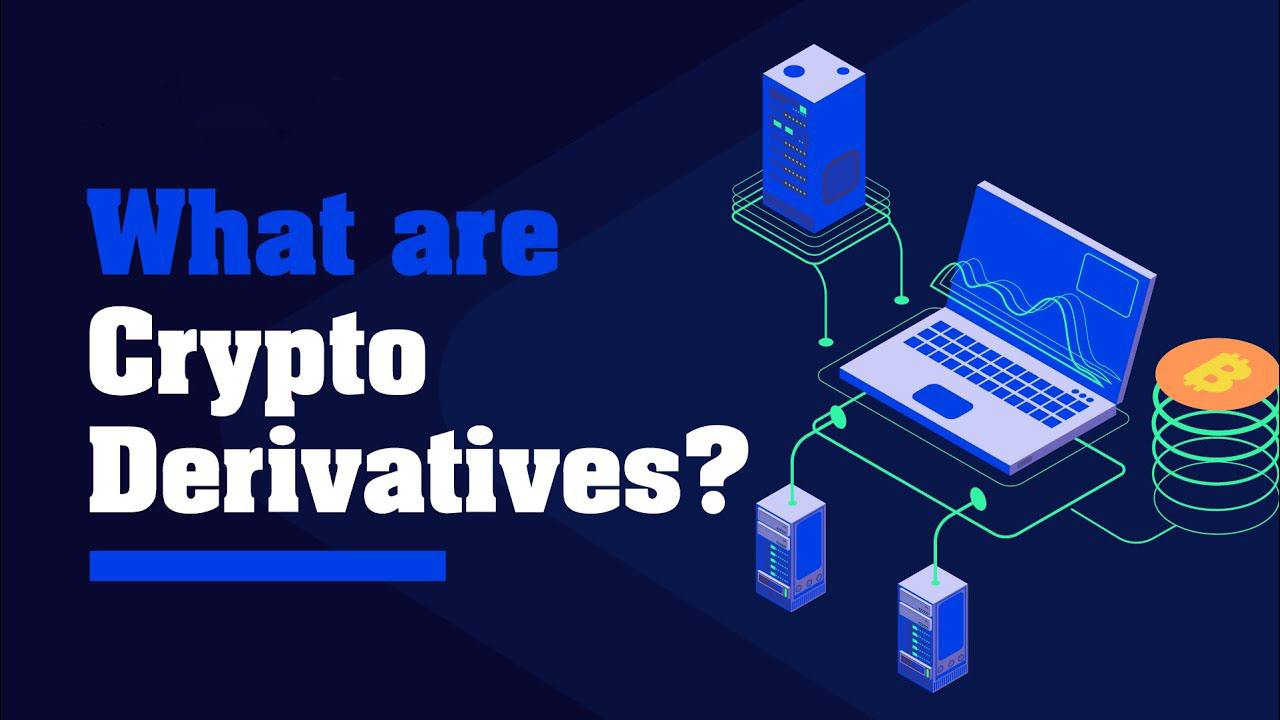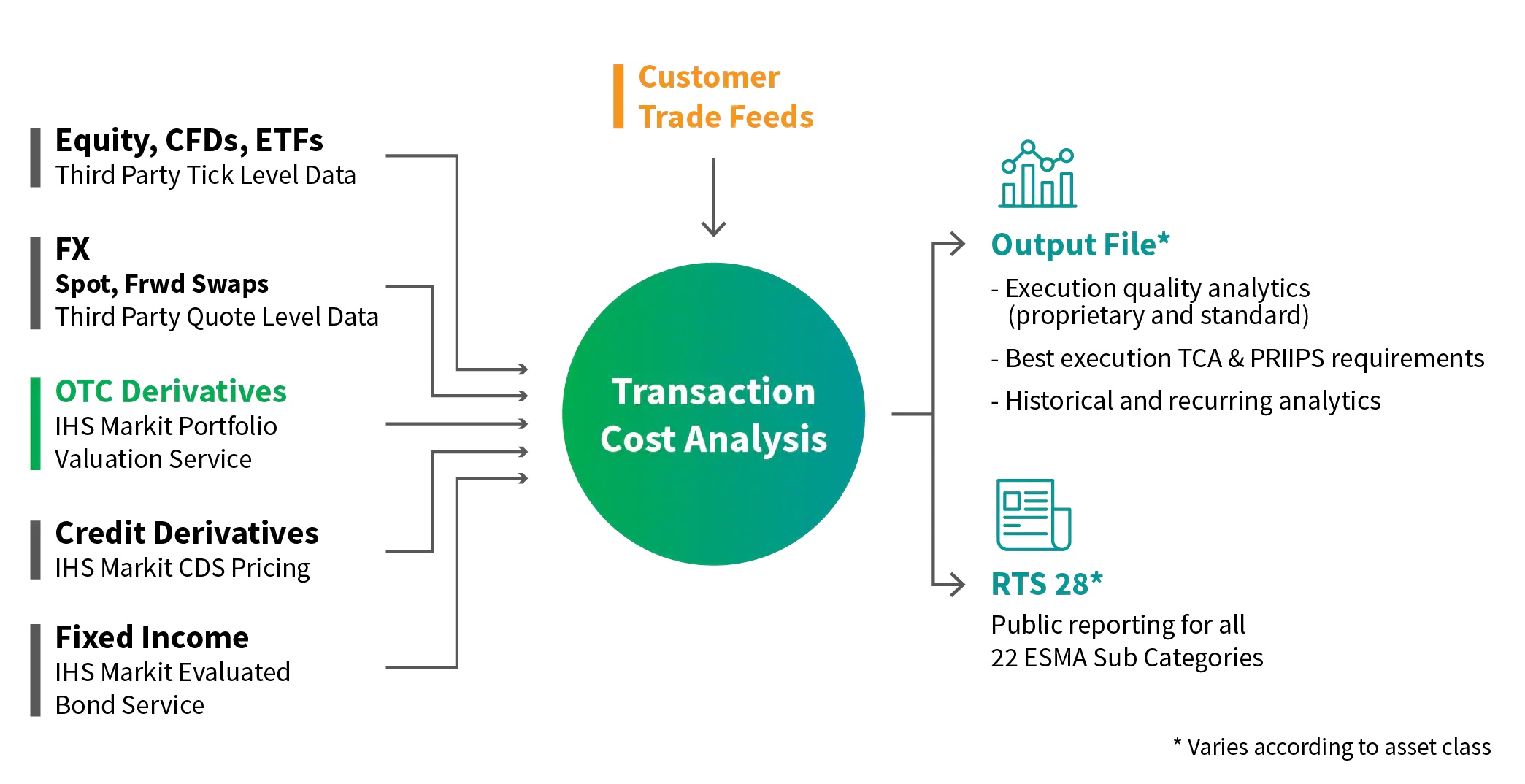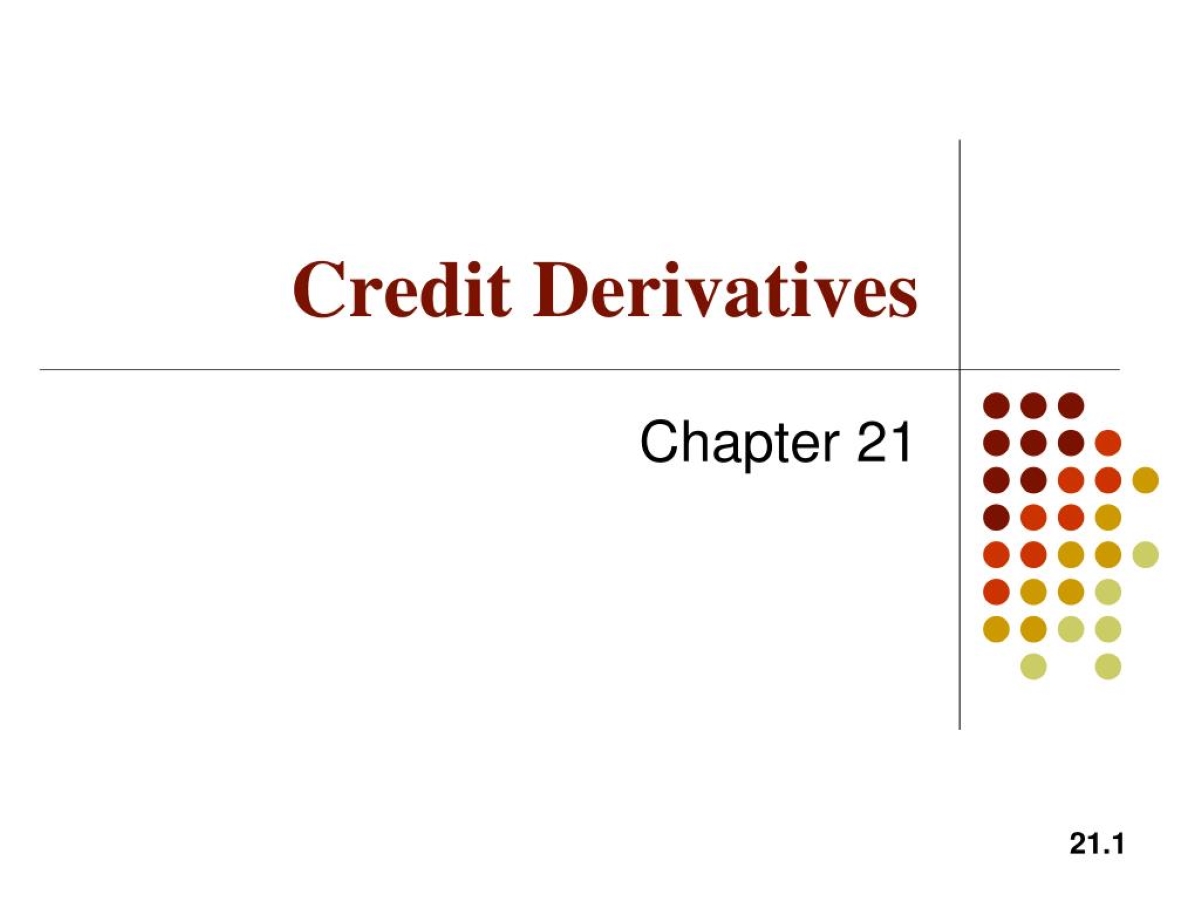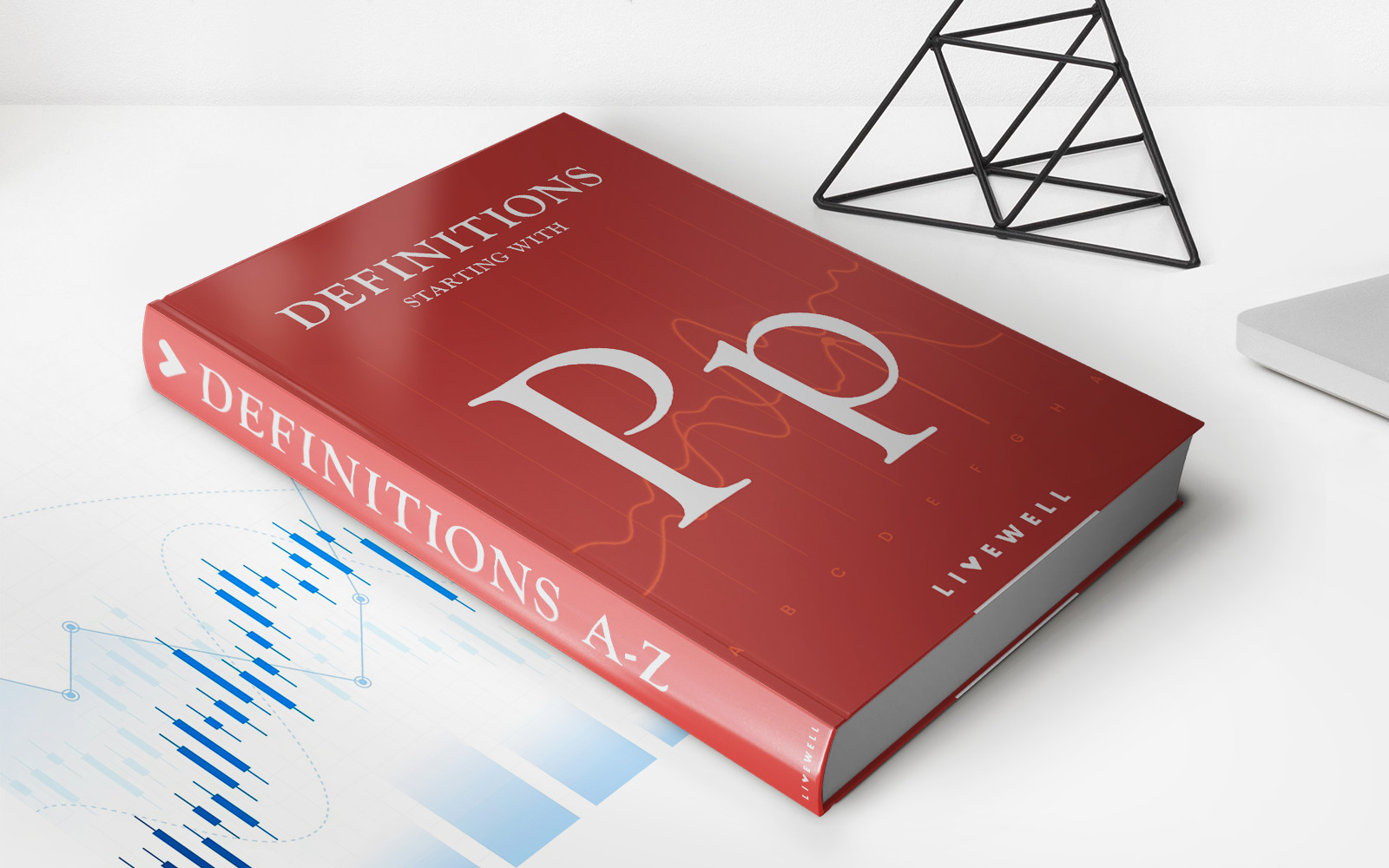

Finance
What Is Embedded Derivatives
Published: October 5, 2023
Discover what embedded derivatives are in the field of finance and how they impact investment strategies and risk management.
(Many of the links in this article redirect to a specific reviewed product. Your purchase of these products through affiliate links helps to generate commission for LiveWell, at no extra cost. Learn more)
Table of Contents
Overview
Embedded derivatives are financial instruments that are embedded within a non-derivative contract or agreement. These derivatives are not stand-alone instruments but are instead a part of another contract, such as a loan agreement, lease agreement, or purchase agreement. They can have a significant impact on the financial performance and risk exposure of the entity involved.
The primary purpose of including embedded derivatives in non-derivative contracts is to provide a hedge against certain risks, such as interest rate fluctuations, foreign exchange fluctuations, or price fluctuations of commodities. By incorporating these derivatives, entities can protect themselves from unexpected changes in the market.
However, the complexity and the risks associated with embedded derivatives make it essential for companies to have a thorough understanding of these instruments and their accounting treatment. Failure to properly account for embedded derivatives can lead to financial misrepresentation and potential non-compliance with regulatory requirements.
Embedded derivatives can be found in a wide range of contracts across various industries. For example, in the banking sector, embedded derivatives can be present in loan agreements with variable interest rates. In the automotive industry, lease agreements may contain embedded derivatives related to the residual value of the leased vehicle. Similarly, commodity purchase agreements may have embedded derivatives linked to fluctuations in commodity prices.
Understanding the types of embedded derivatives, their accounting treatment, and the associated risks and benefits is crucial for financial reporting and risk management purposes. It allows entities to accurately reflect the financial impact of these instruments and make informed decisions to mitigate risks and optimize their financial performance.
Definition of Embedded Derivatives
Embedded derivatives are financial instruments that are embedded within a non-derivative contract or agreement. Unlike standalone derivatives, which are independent and tradable instruments, embedded derivatives are an integral part of a larger contract. They are designed to provide protection against specific risks associated with the underlying contract.
An embedded derivative derives its value from an underlying financial instrument, index, or other variables, and its value changes in response to fluctuations in these underlying factors. Some common underlying risks that embedded derivatives are used to hedge against include interest rate risks, foreign exchange risks, equity price risks, or commodity price risks.
The key characteristic of an embedded derivative is that it cannot be separated from the host contract and traded independently. It is essentially an inseparable part of the overall agreement, serving as a risk management tool for one or both parties involved.
To be considered an embedded derivative, the instrument must meet specific criteria. Firstly, it must be embedded within a non-derivative contract such as a loan agreement, lease agreement, or purchase agreement. Secondly, it must have a value that is dependent on underlying variables or financial instruments. Finally, it must not be a contract in its entirety, but rather a component or feature of the larger agreement.
Embedded derivatives can take various forms depending on the nature of the underlying contract. For example, a loan agreement may have an embedded interest rate swap, which allows the borrower to convert their variable interest rate into a fixed rate. Similarly, a lease agreement may include an embedded currency swap to manage foreign exchange risks.
It is important to distinguish between embedded derivatives and other contractual features or contingencies. Some features of a contract, such as price adjustments or early termination clauses, may have economic consequences, but they do not represent embedded derivatives unless they meet the specific criteria outlined above.
Proper identification and accounting treatment of embedded derivatives are essential to ensure accurate financial reporting and compliance with regulatory requirements. Failure to recognize and account for these instruments appropriately can lead to financial misrepresentation and potential legal and financial consequences.
Types of Embedded Derivatives
Embedded derivatives can vary in form and complexity depending on the underlying risks they are designed to hedge against. Here are some common types of embedded derivatives:
- Interest Rate Swaps: An interest rate swap is a popular type of embedded derivative commonly found in loan agreements. It allows parties to exchange fixed and floating interest rate payments to manage interest rate risks. For example, a borrower with a variable-rate loan may use an embedded interest rate swap to convert the variable interest payments into fixed-rate payments.
- Foreign Exchange Forwards: Embedded derivatives in the form of foreign exchange forwards are often included in contracts involving international transactions. These derivatives are used to mitigate the risk of exchange rate fluctuations. Parties can agree to exchange currencies at a specified future date and predetermined exchange rate, shielding themselves from potential currency value changes.
- Commodity Price Options: Contracts involving the purchase or sale of commodities often include embedded derivatives in the form of commodity price options. These derivatives provide a mechanism for parties to protect themselves from price volatility by granting the right to buy or sell a specific quantity of a commodity at a predetermined price.
- Equity Conversion Features: Some contracts, such as convertible bonds or convertible preferred stocks, contain embedded derivatives in the form of equity conversion features. These derivatives allow the holder of the security to convert it into a specified number of the issuer’s common shares, offering potential upside if the issuer’s stock price rises.
- Embedded Caps and Floors: Embedded caps and floors are derivatives commonly found in adjustable-rate contracts, such as adjustable-rate mortgages or floating-rate bonds. They establish upper and lower limits on interest rate fluctuations, providing a level of protection for borrowers or investors.
These are just a few examples of the numerous types of embedded derivatives that exist in various financial contracts. The specific characteristics and complexity of each embedded derivative will depend on the nature of the underlying risks and the objectives of the parties involved.
It is crucial for entities to carefully identify and assess the embedded derivatives present in their contracts, as each type has specific accounting and reporting requirements. Proper recognition and measurement of these derivatives are important to ensure accurate financial reporting and compliance with accounting standards and regulatory guidelines.
Examples of Embedded Derivatives
Embedded derivatives can be found in a wide range of contracts across various industries. Here are some examples:
- Loan Agreements: Loan agreements are a common area where embedded derivatives can be found. For instance, a loan agreement may include an embedded interest rate swap. This allows the borrower to exchange its variable interest rate for a fixed interest rate, offering protection against fluctuations in interest rates.
- Lease Agreements: Embedded derivatives can also be present in lease agreements. For example, in an automotive lease agreement, there may be an embedded derivative related to the residual value of the leased vehicle. If the contract includes provisions for adjusting the buyout price based on the residual value at the end of the lease, it would be considered an embedded derivative.
- Commodity Purchase Agreements: Contracts involving the purchase or sale of commodities often incorporate embedded derivatives. For instance, a contract for the purchase of oil may have an embedded derivative linked to the price of oil. If the contract includes a provision that adjusts the purchase price based on changes in the market price of oil, it would be considered an embedded derivative.
- Convertible Securities: Convertible securities, such as convertible bonds or convertible preferred stocks, contain embedded derivatives. These derivatives allow the holder to convert the security into a specific number of common shares at a predetermined conversion price. This embedded derivative provides the potential for conversion into equity if the issuer’s stock price reaches a certain level.
- Insurance Contracts: Even insurance contracts may contain embedded derivatives. For instance, certain life insurance policies offer riders that provide additional benefits or coverage based on the performance of underlying financial instruments, such as a stock market index or a mutual fund. These riders constitute embedded derivatives within the insurance contract.
The examples above illustrate how embedded derivatives can appear in various contractual arrangements in different sectors. The purpose of including these derivatives is to manage specific risks associated with the underlying contracts and provide additional flexibility and protection to the parties involved.
Entities need to identify and analyze the presence of embedded derivatives within their contracts, as they have accounting and reporting implications. Accurate recognition, measurement, and disclosure of these derivatives are crucial for compliant financial reporting and effective risk management.
Accounting Treatment of Embedded Derivatives
Accounting for embedded derivatives requires careful consideration and adherence to accounting standards, such as the International Financial Reporting Standards (IFRS) or the Generally Accepted Accounting Principles (GAAP). The accounting treatment varies depending on the specific circumstances and characteristics of the embedded derivative.
Generally, there are two key accounting approaches for embedded derivatives:
- Separate Accounting: Under this approach, the embedded derivative is treated as a standalone instrument. It is separated from the host contract and accounted for at fair value, with changes in fair value recognized in the income statement. The host contract is accounted for separately without any consideration of the embedded derivative.
This approach is applied when the embedded derivative meets certain criteria for separation, such as being separately measurable and reliable or carrying significant risks and rewards unrelated to the host contract.
- Embedded Derivative Exception: In certain cases, the embedded derivative is not accounted for separately but is instead treated as part of the host contract. This approach is known as the “embedded derivative exception” and is based on the principle that the risks and rewards of the embedded derivative are closely related to the host contract.
Under the embedded derivative exception, the host contract and the embedded derivative are accounted for together as a single unit. The entire contract is evaluated for classification, recognition, and measurement requirements, considering the overall cash flows and characteristics of the combined instrument.
The determination of the appropriate accounting treatment depends on factors such as the nature of the embedded derivative, the intent of the entity, and the guidance provided by the accounting standards. It is essential for entities to carefully evaluate the specific terms and conditions of each contract to determine the appropriate accounting treatment.
Entities must also disclose relevant information about the embedded derivatives, including their nature, fair value, and the methodologies used for their fair value measurement. These disclosures provide transparency and facilitate a better understanding of the financial impact of embedded derivatives on the entity’s financial statements.
Accounting for embedded derivatives requires a comprehensive understanding of the relevant accounting standards and careful consideration of the specific circumstances involved. It is crucial for entities to seek professional guidance and ensure compliance with the applicable accounting requirements to accurately reflect the financial implications of embedded derivatives in their financial statements.
Risks and Benefits of Embedded Derivatives
Embedded derivatives offer both risks and benefits to entities involved in the underlying contracts. Understanding these risks and benefits is crucial for effective risk management and informed decision-making. Here are some key considerations:
Risks:
- Market Risk: Embedded derivatives are often used to hedge against market risks such as interest rate fluctuations, foreign exchange rate movements, or commodity price volatility. However, if not properly managed, there is still a risk that these derivatives may not fully protect against adverse market conditions, leading to financial losses.
- Complexity: Embedded derivatives can introduce complexity to financial contracts and transactions. Assessing the fair value and accounting treatment of these derivatives requires specialized knowledge and expertise, and any errors or misjudgments can result in misstated financial statements.
- Legal and Regulatory Compliance: Entities must ensure that their use of embedded derivatives complies with applicable laws and regulations. Failure to comply with regulatory requirements can lead to legal consequences, reputational damage, or loss of business opportunities.
- Counterparty Risk: Embedded derivatives often involve counterparty agreements. If the counterparty fails to fulfill its obligations or experiences financial distress, it could lead to financial losses or disruptions in the contract performance.
- Operational Risk: The effective management of embedded derivatives necessitates robust operational systems and processes. Failure in operational processes, such as inaccurate data inputs or inadequate risk monitoring systems, can result in errors, financial loss, or reputational damage.
Benefits:
- Risk Mitigation: The primary benefit of embedded derivatives is their ability to mitigate specific risks associated with the underlying contracts. By incorporating these derivatives, entities can protect themselves against adverse market fluctuations and stabilize cash flows.
- Flexibility and Customization: Embedded derivatives can be tailored to the specific needs of the parties involved. They provide flexibility in managing risks and allow entities to design contracts that better align with their financial objectives.
- Potential Cost Savings: Properly structured embedded derivatives can result in cost savings. For example, entities can use interest rate swaps to convert variable interest rates into fixed rates, potentially reducing interest expenses over time.
- Enhanced Risk Management: Embedded derivatives facilitate more effective risk management strategies, allowing entities to hedge against risks and optimize their overall risk-return profile.
- Competitive Advantage: Utilizing embedded derivatives can provide a competitive edge by enabling entities to offer more attractive terms to counterparties, such as stable cash flows or protection against adverse market conditions.
While embedded derivatives offer various benefits, they also introduce risks that need to be carefully managed. It is essential for entities to have a comprehensive understanding of the risks involved and to implement robust risk management frameworks to effectively utilize embedded derivatives and mitigate potential adverse impacts.
Regulatory Framework for Embedded Derivatives
The use of embedded derivatives is subject to regulatory frameworks aimed at ensuring transparency, fair practices, and financial stability. These frameworks help promote proper disclosure, risk management, and compliance with accounting and regulatory standards. Here are key factors of the regulatory framework for embedded derivatives:
Accounting Standards: There are global accounting standards, such as the International Financial Reporting Standards (IFRS) or the Generally Accepted Accounting Principles (GAAP), that provide guidance on the recognition, measurement, and disclosure of embedded derivatives. Entities must adhere to these standards to ensure accurate financial reporting.
Regulatory Authorities: Regulatory agencies, such as the Securities and Exchange Commission (SEC) in the United States or the Financial Conduct Authority (FCA) in the United Kingdom, oversee the use of derivatives and embedded derivatives. They ensure compliance with regulations and may impose disclosure requirements or restrictions on the use of these instruments.
Risk-Based Capital Requirements: Banks and financial institutions are subject to risk-based capital requirements imposed by regulatory bodies like the Basel Committee on Banking Supervision. These requirements take into account the risks associated with embedded derivatives and ensure that institutions maintain sufficient capital to absorb potential losses.
Derivatives Clearinghouses and Exchanges: Some embedded derivatives may be required to be traded on recognized exchanges or cleared through central counterparties. This helps promote transparency, standardization, and risk mitigation in derivative transactions by providing centralized monitoring, risk management, and default protection.
Mandatory Reporting: Regulatory bodies may require entities to report details of their derivative and embedded derivative transactions to regulatory authorities. This reporting aims to enhance market transparency, monitor systemic risks, and detect any potential manipulative or abusive practices in derivative markets.
Disclosure Requirements: Entities are often required to disclose information about their embedded derivatives in financial statements and regulatory filings. This includes details on the nature, fair value, and risks associated with these derivatives. These disclosures provide transparency to investors and stakeholders and enable them to make informed decisions.
Risk Management Guidelines: Regulatory bodies may issue guidelines and best practices for managing risks associated with embedded derivatives. This includes risk assessment, stress testing, and internal controls to ensure proper risk management frameworks are in place.
Entities involved in embedded derivatives must keep abreast of the regulatory landscape, monitor changes in regulations, and ensure compliance with applicable rules. Non-compliance with regulatory requirements can lead to legal and financial consequences, including fines, reputational damage, or loss of business opportunities.
Conclusion
Embedded derivatives play a significant role in managing risks and enhancing financial flexibility within various contractual arrangements. These derivatives are embedded within non-derivative contracts and help entities mitigate market risks, such as interest rate fluctuations, foreign exchange rate movements, or commodity price volatility.
Entities must carefully identify, evaluate, and account for embedded derivatives, as their presence can have a significant impact on financial reporting and risk management. Proper recognition, measurement, and disclosure of these derivatives are crucial for compliant financial statements and meeting regulatory requirements.
Embedded derivatives come with both risks and benefits. While they provide opportunities for risk mitigation, customization, and cost savings, entities must be aware of potential risks such as market volatility, complexity, and counterparty risks. Implementing robust risk management frameworks and complying with regulatory frameworks are essential to harness the benefits of embedded derivatives while mitigating associated risks.
The regulatory framework for embedded derivatives includes accounting standards, regulatory authorities, risk-based capital requirements, derivatives clearinghouses and exchanges, mandatory reporting, disclosure requirements, and risk management guidelines. Entities must stay informed about regulatory changes, ensure compliance, and adhere to best practices to maintain transparency, fair practices, and financial stability.
In conclusion, understanding the nature, accounting treatment, and regulatory framework of embedded derivatives is essential for entities engaged in contractual arrangements involving these instruments. By effectively managing risks and complying with regulatory requirements, entities can optimize the benefits of embedded derivatives while mitigating potential adverse impacts. Proper recognition, measurement, and disclosure of these derivatives enable accurate financial reporting, informed decision-making, and enhanced risk management.














